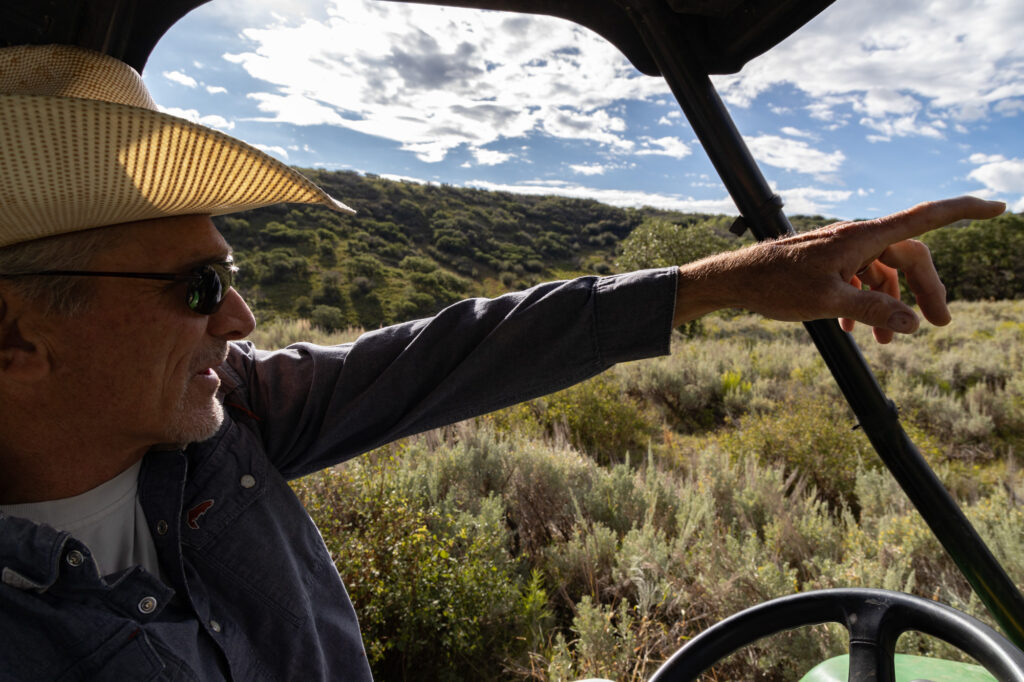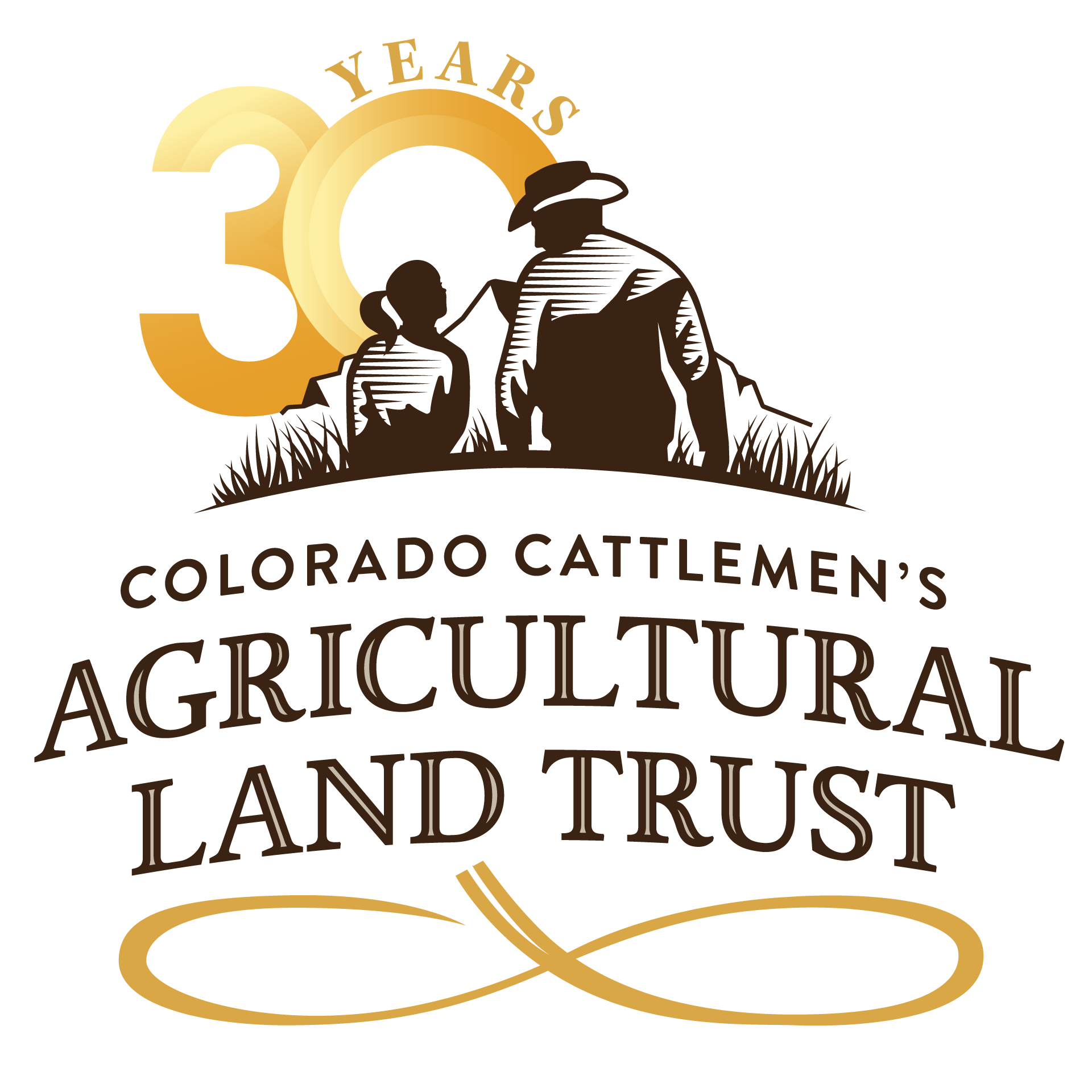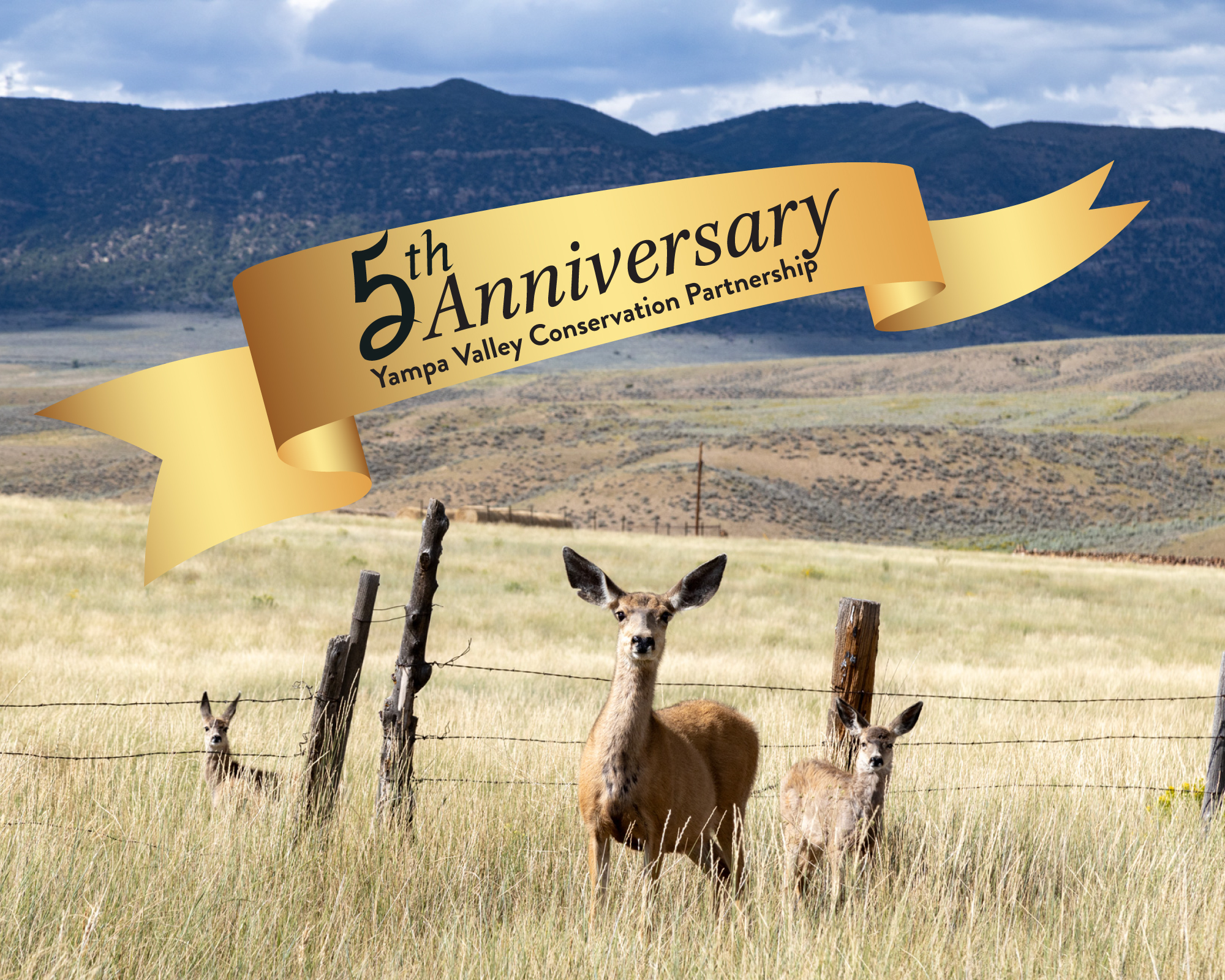The WILDLIFE Inspires Us
This is the third article in a four-part monthly series that highlights different themes: Land, Water, Wildlife, and Family for the Yampa Valley Conservation Partnership (YVCP) 5th Anniversary celebration. The YVCP is a continuation and extension of conservation partnerships that Northwest Colorado has built for more than 30 years.
August 28, 2024 | Text and Photographs By: Karina Puikkonen | 7 min. read
You don’t have to be in Northwest Colorado for long before you see one of its wild inhabitants in its natural habitat. The wildlife I usually see first are raptors that I try to identify by belly and wing markings as they soar across the sky.
I was in Rio Blanco County this month visiting some of our Colorado Cattlemen’s Agricultural Land Trust’s (CCALT) ranch family partners and the conserved properties they own and steward. The White River Valley is a mosaic of private agricultural fields and lands that border each other and connect to even larger expanses of surrounding public lands. Ranchers around the town of Meeker have been immersed in this remote and wild landscape since the town was established in 1885.
The White River Valley’s ranching community is vital to the conservation of big game and other wildlife species. The open, undeveloped landscape allows for seasonal migrations and habitat that enables wildlife populations to thrive. This valley is home to the largest elk and mule deer herds in the state, and fishing along the White River is considered some of the best in Colorado.
The economic benefit of ungulate and fish populations is significant to Meeker and its surrounding communities. Many families, including CCALT landowner partners, own or work for local outfitting businesses which provide additional income to their agricultural operations. However, the bottom line isn’t the most important aspect of their relationship with wildlife. These families love the local fauna and some of the most inspiring and memorable moments in their lives have come from communing with the wild animals that have lived or migrated through this valley for time immemorial.

Hunt and Haven
When Brett Harvey was fresh out of college in the early 1980s, he found a way to purchase a family member’s ranch interest so that he and his mother could continue running the ranch that has been in the family since the 1930s. Lunney Mountain Ranch is in the hills east of Meeker with a mixture of open grassland habitat, mountain shrub, aspen forest, and sage steppe that supports a wide range of wildlife, as well as the family’s current cattle operation.
In 1986, Brett began a hunting outfitting business on the ranch that became his main source of income. He also added a private fly-fishing lodge in 1993 which he guided from and managed through the end of last year. To maximize the outfitting business, Harvey has utilized the property for shorter durations of livestock grazing that are timed to allow for the re-growth of fall wildlife forage.

When the Harveys considered a conservation easement on Lunney Mountain in the mid-2000s, their goal was to conserve and enhance the habitat from the Coal Creek bottoms to the hilltops to benefit wildlife populations. While this would help boost the supply for their hunting and fishing outfitting business, another main purpose was to provide a haven for wildlife from public land pressures nearby.
“Conserving private lands helps balance the needs for wildlife since a great amount of their time is spent on private lands,” Harvey said.
During the conservation easement process, he learned that the ranch provided a much-needed home for Columbian sharp-tailed grouse, a state species of concern. Harvey said he has watched them every year ever since.
Since completing their conservation easement in 2007 with the Yampa Valley Land Trust (YVLT), the Harveys have made improvements to land and water resources which have provided a win-win for both of their operations. The family augmented water distribution through wells, stabilized stream banks, managed brush for better habitat and re-growth, and did a few controlled burns that revitalized the vegetation. CCALT has held this ranch’s easement since the 2019 YVLT merger, and I could see the ongoing improvements to this landscape during our annual visit.
“When you are always trying to improve the land for the benefit of both your agricultural production and wildlife populations, it seems to work fairly well,” Harvey said.

As we rode around on his side-by-side, Harvey explained the annual migration of elk that comes through his property. The elk will begin coming down from U.S. Forest Service Lands over the next few weeks. A group stays on Lunney Mountain Ranch until the snow gets too deep, then the elk head northwest to the Yampa River to winter. They reverse course when the snow leaves and the grass greens. Harvey has seen thousands of elk migrate back and forth over the years.
Experience Over Results
The Dunham family is a multigenerational ranching family, who homesteaded the Dunham Ranch in Meeker in 1913. Three generations currently run the ranch which includes pasture and hay meadows along the White River and a mesa parcel with natural habitat east of Meeker. The Dunhams conserved both parcels with CCALT in 2022.
Father and son Rodney and Ty Dunham have worked as guides for outfitters in the area. Before running the ranch full-time, Rodney guided hunts on public lands for 20 years. Following in his father’s footsteps, Ty guided hunts full-time on private lands for the last five years before staying on at the ranch year-round. For both, their best memories come from the pursuit.
Ty recalled an early childhood memory of hunting with his father on horseback. While tracking, his father suddenly took off, riding off trail through the forest. When they finally came to a clearing, they stopped. Ty remembers Rodney saying, “The elk will be coming through in a few minutes.” Sure enough, in two minutes he remembers a herd of elk came waltzing through the meadow.

After years of experience hunting both together and separately, it was amazing to hear them recount similar experiences that were years apart. One year, Rodney was guiding hunters in the pitch dark until he found a spot to settle everyone down and wait. Soon, he said they were surrounded by mewing and bugling. Ty also remembered a hunt where he was leading clients through the pouring rain, again finding a spot to wait before soon enough they were also surrounded by a group of elk.
The Dunhams find differences between hunting on public and private lands. On private lands, you don’t have to compete with other hunters who find the same spots you do, private landowners can help manage healthy populations by guiding hunters to take older or sick animals, and private outfitters get to meet interesting people from all over the country and help them better understand these wild animals. At this point in their lives, the wildlife experience means more to Rodney and Ty than the prize.
“Sometimes, I was happier when (hunters) missed,” Rodney said. “Finding the elk was the best part. The next time I go hunting, I’ll just take my camera.”

The Dunhams would like to begin their own family outfitting business but with a focus on fishing. The hard winter of 2022/2023 decimated elk herds, which have been slowly rebounding, but fish are plentiful along the White River.
“People even come over from Aspen and Carbondale to fish here for the experience, because there are fewer people and the fishing is just as good,” Ty said. “We’ve traveled around the U.S. to fish but find that our waters are still better. When I’m done on the ranch in the afternoon, I can be on the river in 15 minutes.”
The Public-Private Lands Connection
Hunting on public and private lands benefits wildlife conservation. The supplemental income that ranchers get from outfitting, and the revenue generated from state hunting and fishing licenses directly enhance the land for wildlife populations.
Private landowners fund improvements to vegetation and water resources through this supplemental income and make their lands more inviting for wildlife to utilize year-round. The state license fees support many Colorado Parks and Wildlife (CPW) management efforts. These include habitat conservation, threatened and endangered species programs, wildlife research, and public education.
“Wildlife need different types of habitats and refuges at different times of the year,” said Kris Middledorf, Colorado Parks and Wildlife’s area wildlife manager for Routt and Jackson counties. “These are remarkable stories of conservation and wise and responsible use of the land by Colorado producers so that all our children and grandchildren will see these same landscapes and have similar experiences in them.”

Species survive and thrive here because they have large continuous landscapes with limited human disturbance. Last summer in the Zirkel Mountains east of Steamboat Springs, Middledorf said he saw 150 elk with his son. Gazing over the Elk River corridor and Bears Ears Range, he knew this herd would be 30-70 miles west of that spot in six months. The relationships between private, public, and state individuals and entities have made open private and public landscapes possible, which offer experiences in nature that are key to inspiring the next generation of conservationists.
During my visit to the White River Valley in Rio Blanco County, I kept my eyes open. While touring with the Dunhams, we spotted two bald eagles and two golden eagles flying around together before landing on the property. Raptors, check.
After my final conserved property visit, I was driving along a remote dirt road miles away from town. A mule deer doe and two fawns were ahead in the middle of the road. I slowed down and they moved to the shoulder. Instead of running away, they looked at me curiously. Remembering what Rodney Dunham said, I grabbed my camera and took a photo. This little deer family then bounded over the fence and made their way safely across an open agricultural field.
The stewardship of private landowners like the Dunham and Harvey families ensures that moments of natural wonder, like these, can be shared by all who pass through the White River Valley and other rural parts of Colorado.

